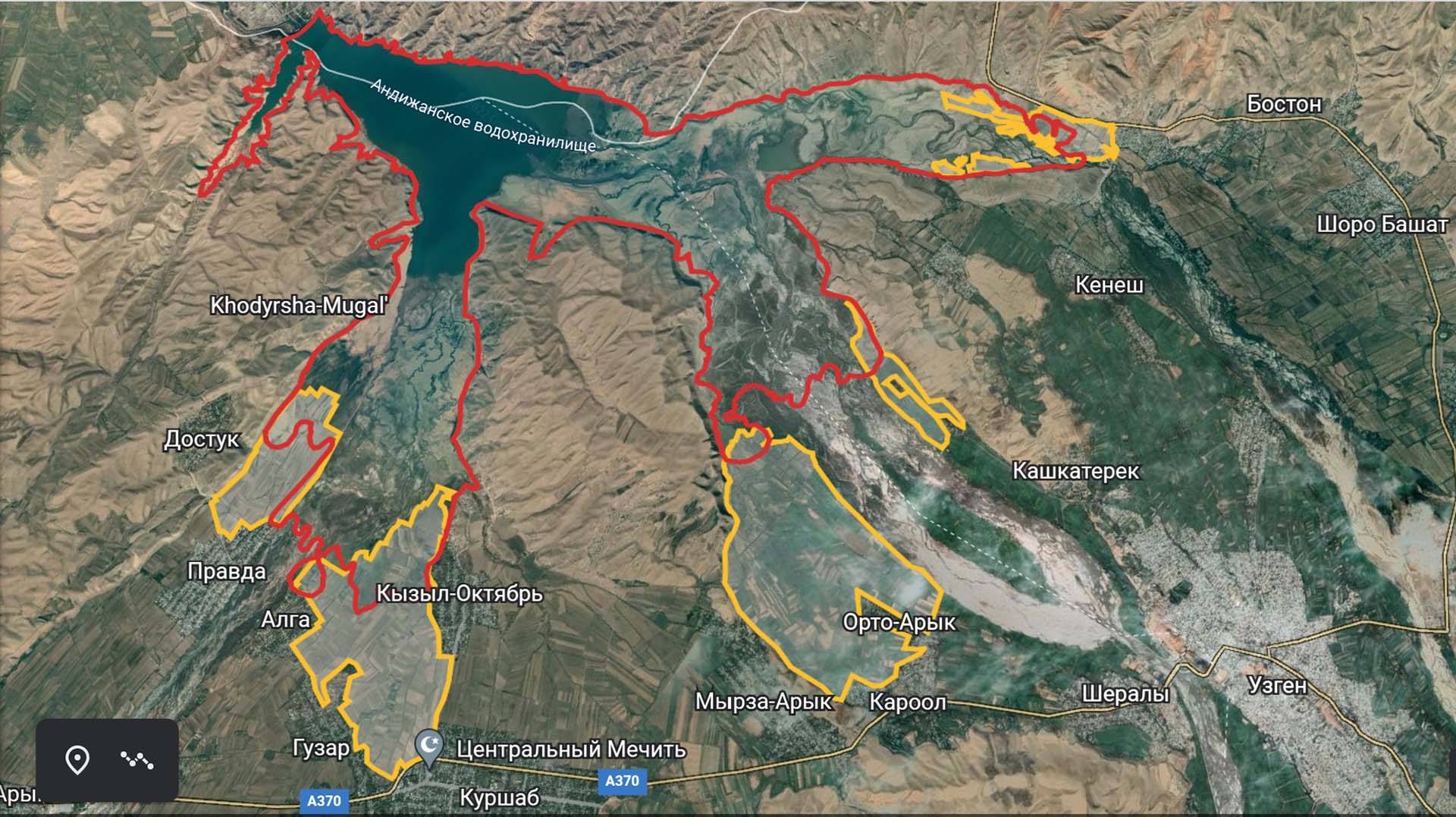More than 20 activists and politicians have been arrested in Kyrgyzstan after protests over the delimitation of the border with Uzbekistan in the area of the Kempir-Abad reservoir and the corresponding secret agreement, which was signed by the parties on September 26. Among those arrested are many women, which is unheard of in Kyrgyzstan, local journalists explain to The Insider. The trials were held on October 24 from 18:00 to 5:30 in the morning, in all cases the courts recognized the legality and validity of the detention of activists. According to information received from human rights activists, the court turned a blind eye to violations during the detention process. The court sessions themselves were also accompanied by numerous violations. As a result, 19 people were arrested before December 20–23, and no decision has yet been made on the rest.
The Kempir-Abad reservoir (in Uzbekistan it is called Andijan) was built in 1983, Uzbekistan built the dam forming it back in the 60s. The area of the reservoir is 4400 hectares, it is fed by the Tar, Kara-Kuldzha and Kara-Darya rivers, the reservoir gives rise to the Ferghana Canal, which is important for Uzbekistan. In the late 60s, due to the construction of a dam, a significant part of the Kirghiz SSR was flooded, in return, the Uzbek SSR gave 4127 hectares of land in the border areas. It is this argument that the Uzbek side makes, insisting that the reservoir should be transferred to it. At the same time, Kyrgyzstan believes that Uzbekistan used the flooded lands on a leasehold basis and actually compensated for the damage to someone else's property, which does not give the right to take someone else's territory.
They have been trying to resolve the issue of the object’s ownership since Soviet times, and in the fall there was information that the President of Kyrgyzstan, Sadyr Japarov, plans to transfer the reservoir to Uzbekistan, which he himself later confirmed: in September 2022, already in Bishkek, Japarov received the Prime Minister of Uzbekistan Abdulla Aripov, after which it was it was announced that the parties are ready to sign an agreement on the transfer of the reservoir to Uzbekistan.
“We have come to an agreement under which we will create a joint venture and will jointly manage the dam on a 50/50 basis,” Zhaparov said. – This is how we will control that the water horizon does not exceed 900. Now it is possible to pump water to the villages closest to the reservoir. Prior to this, there were no such opportunities. Based on historical archival documents, the dam was built in 1965 by the Uzbek side. We didn't invest a dime in it."
Zhaparov insists that the residents of the republic will only benefit from the transfer of the reservoir, silently saying that people are not worried about the reservoir at all, but about the fertile land nearby, which is also likely to go to Uzbekistan (the draft agreement is still secret). The land near Kempir-Abad has been in fact the main source of income for local residents for many years, they participate in tenders and rent plots. The famous red Uzgen rice “devzira” is also grown here, from which the best pilaf in Central Asia is prepared, the Kloop newspaper writes .
The authorities of both countries promise that Uzbekistan will not enclose the territory, and the residents of Kyrgyzstan will be able to continue to use it in their own interests, but people do not believe in this – everything can change with the change, for example, of the president of Uzbekistan. If Uzbekistan bans Kyrgyz families from using the fields, many will have to leave in search of work, locals say.
The draft agreement with Uzbekistan on state borders has not yet been made public, but it is known that Uzbekistan receives the Kempir-Abad bowl in exchange for land in other areas, and that the new border around the reservoir will pass along the “900th horizontal line”. This is an isoline on a topographic map, enveloping the terrain at a level of 900 meters above sea level, Kloop writes, presenting a map of the intersection of the territory that is planned to be given to Uzbekistan and the fertile fields that are used by the inhabitants of Kyrgyzstan. The publication draws attention to the fact that the border line is not the result of professional cartographic research and does not claim to be 100% accurate.

On October 22, politician Ravshan Dzheenbekov announced the creation of the Committee for the Protection of the Kempir-Abad Reservoir, before that, opponents of the transfer of the reservoir held a protest procession in the Uzgen region. Zhaparov called them provocateurs. The Ministry of Internal Affairs stated that a case was initiated against members of the Committee for the Protection of the Reservoir on preparation for mass riots. During the day on October 23-24, more than 20 politicians and activists were detained, and later arrested until December by a court decision. The main detentions took place on October 23, but the very next day the protests resumed and became more numerous, 400 people marched in the procession, they, among other things, demanded the release of those arrested.
At the same time, in Uzbekistan, they are much more indifferent to the situation, writes the Uzbek edition of Hook. According to the authors of the material, it is difficult to imagine that protests would start there because of this problem, while in Kyrgyzstan the population, on the contrary, is very politically active. It is the Kyrgyz nationalists who are the main electorate of Zhaparov, whom they actually brought to power, and it is they who are now destroying his rating due to unpopular decisions on the national border.
“They used to try to do it publicly, and they didn’t succeed,” Uzbek journalists said in an article. “Now they are discussing this behind closed doors, but people are protesting because they don’t understand what decisions the authorities are making and what territories will be given away. And because of this, the issue of border areas is not resolved in any way.”


